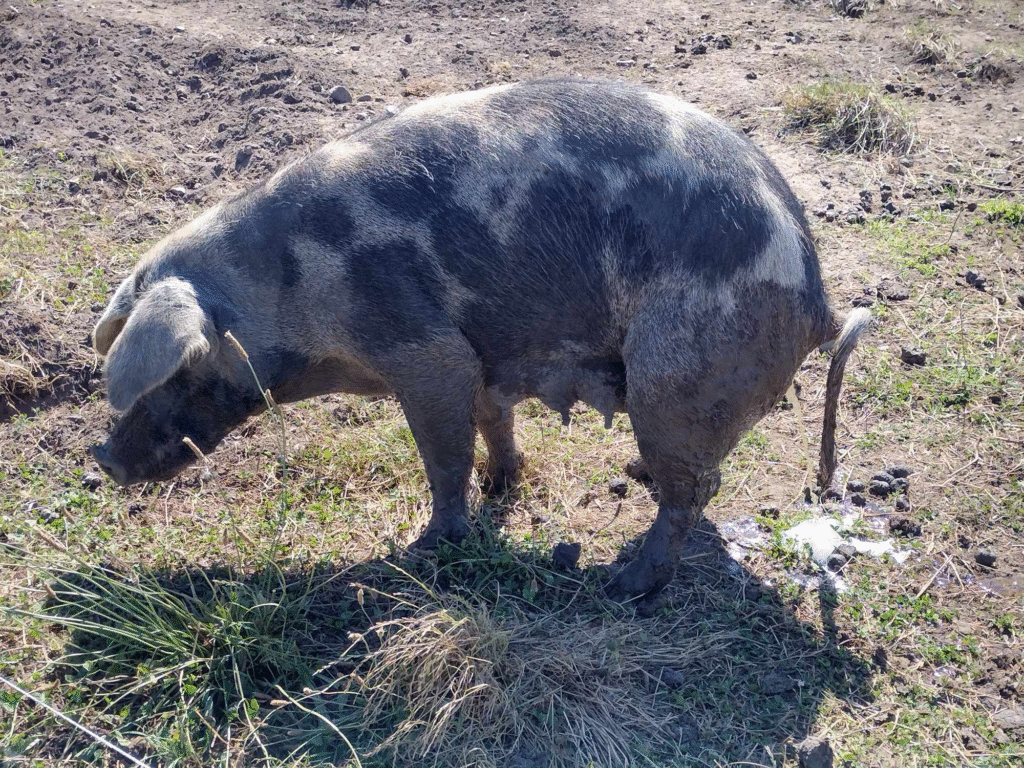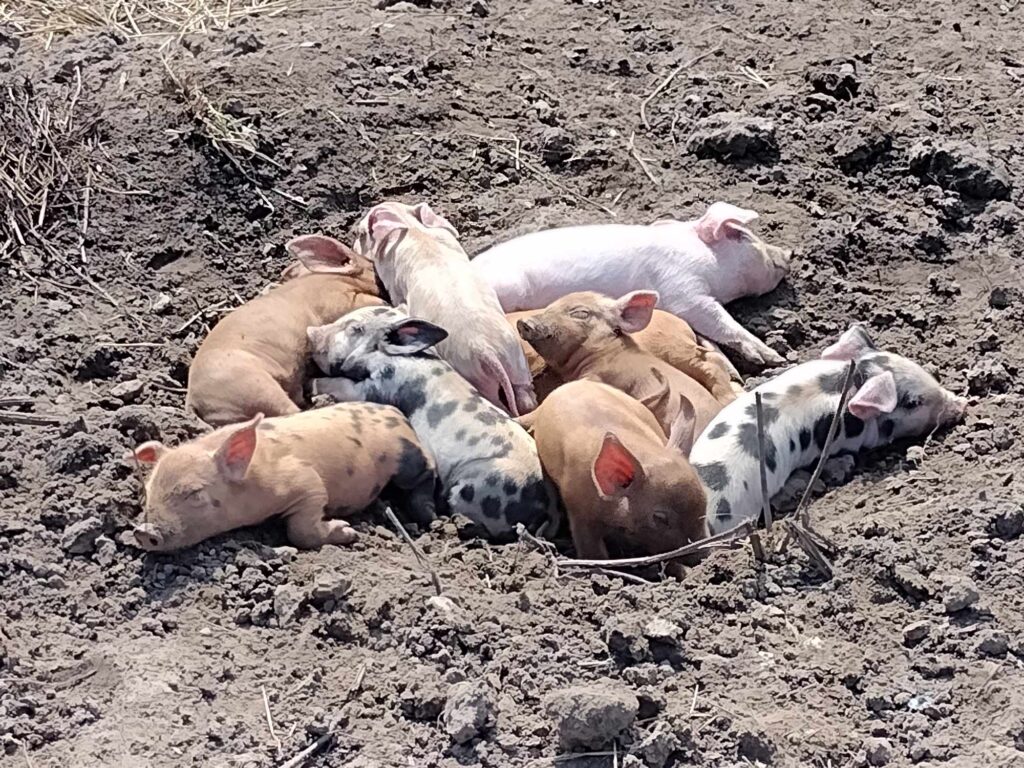The aim of this study was to investigate elimination-related behaviours and preferred elimination locations of sows and piglets in a natural outdoor environment. The results show both similarities and differences in the occurrence of behaviours prior to elimination for both sows and piglets.
Sows most commonly expressed sniffing and nosing behaviours prior to both urination and defecation, indicating a likely reliance on olfactory cues to assess the suitability of elimination sites. These behaviours may help them identify previously used spots, either their own or those of conspecifics. Rooting, which is also a form of exploratory behaviour, was rarely observed before elimination. This may be due to avoidance of strong odours, such as ammonia, or a general tendency to avoid foraging near dung.
In contrast, foraging behaviour was frequently expressed, especially prior to defecation. This could be explained by the animals’ greater mobility during defecation compared to urination, allowing them to continue foraging. The natural vegetation in the overgrown pens likely supported this behaviour, providing accessible food sources without requiring rooting. Walking behaviour was also more frequent before defecation, which further supports the idea of increased movement during this type of elimination. Additionally, sows vocalised more often prior to defecation. This may be linked to increased activity or social communication. However, vocalisation may have been limited by the individual housing of sows, with only occasional interaction with piglets, who had free access across pens.
Overall, the observed behaviours suggest that sows use olfactory and exploratory cues to select elimination sites, especially in this natural setting.

Piglets commonly expressed exploratory behaviours, such as sniffing and nosing, prior to elimination, mirroring what was observed in sows. Walking occurred significantly more often before defecation, likely due to greater movement flexibility during this elimination type, compared to the longer stance needed for urination. While rooting has been previously reported near elimination sites, piglets rarely rooted before eliminating in this study. This could be related to age, as the piglets were still very young and may not have fully developed or consistently expressed elimination-related behaviours. Similarly, foraging was rarely observed in piglets, possibly due to their dependence on their mothers milk still, reducing the need to actively search for food.
One of the most notable differences between piglets and sows was the high frequency of low-frequency vocalisations in piglets. This may reflect their strong social bonds and frequent interactions with littermates and other piglets, as they had free access across pens. The unrestricted movement and group dynamics likely contributed to increased communication through vocalisations.
Despite these differences, many behavioural similarities were observed, especially in exploratory behaviours. This suggests a possible learning aspect, where piglets observe and imitate their mothers’ behaviours. Social learning, especially in foraging and exploration, is well-documented in pigs, supporting the idea that piglets may adopt elimination-related behaviours by watching and following sows.

The spatial distribution of elimination events showed a clear preference for central zones within the pens. While pigs are commonly reported to eliminate in pen corners, my results indicate a central preference, particularly in Pens B, D, and F.
This difference may be due to the absence of conspecifics. Sows were housed alone or in pairs, reducing the need to seek isolated corners or move away from one another. Additionally, the open layout of the pens, divided only by electrical wires, may have encouraged sows to eliminate near boundaries, possibly for territorial signaling or home range marking.
Piglets also showed a central preference, which may be related to social learning. Piglets are known to follow their mothers, likely resulting in elimination within the same zones. Additionally, the southern area of Pen C, was heavily overgrown and often used by piglets for hiding, which could potentially be related to elimination behaviour for young pigs, but more research in regards to that is needed.
To explore possible olfactory influences, I compared elimination patterns with previous crop layout. The central zones overlapped with rows where radishes, cabbage, and squash were grown. While no studies have confirmed whether pigs prefer certain smells for elimination, this finding may be a factor.

Studies in other species support the idea of dedicated defecation sites for different functions, such as parasite avoidance or territorial marking, which can be seen in examples such as antelopes and reindeer. These factors gives more complexity to pig elimination behaviour, suggesting it could relate to ecological or social purposes, not just hygiene.
Another possible reason for the sows’ preference for eliminating in the central part of the pen may be due to limited space. As pigs avoid eliminating near their resting (north) and feeding (south) areas, the middle of the pen becomes the most suitable location. This central zone is thus the furthest point from both.
My study highlights key elimination behaviours in pigs living in a natural environment. Exploratory behaviours like sniffing and nosing were common before elimination. A strong preference for eliminating in the central pen area may be linked to olfactory cues, social or territorial factors, parasite control or simply the layout of the pen. These findings suggest that understanding elimination site preferences could inform strategies to guide pigs to specific elimination areas, improving welfare, hygiene, and farm management.
If you want to ask me a question, check out my contact information on the “Contact” button below! If you want to look at my thesis poster, check out the “Download” button!